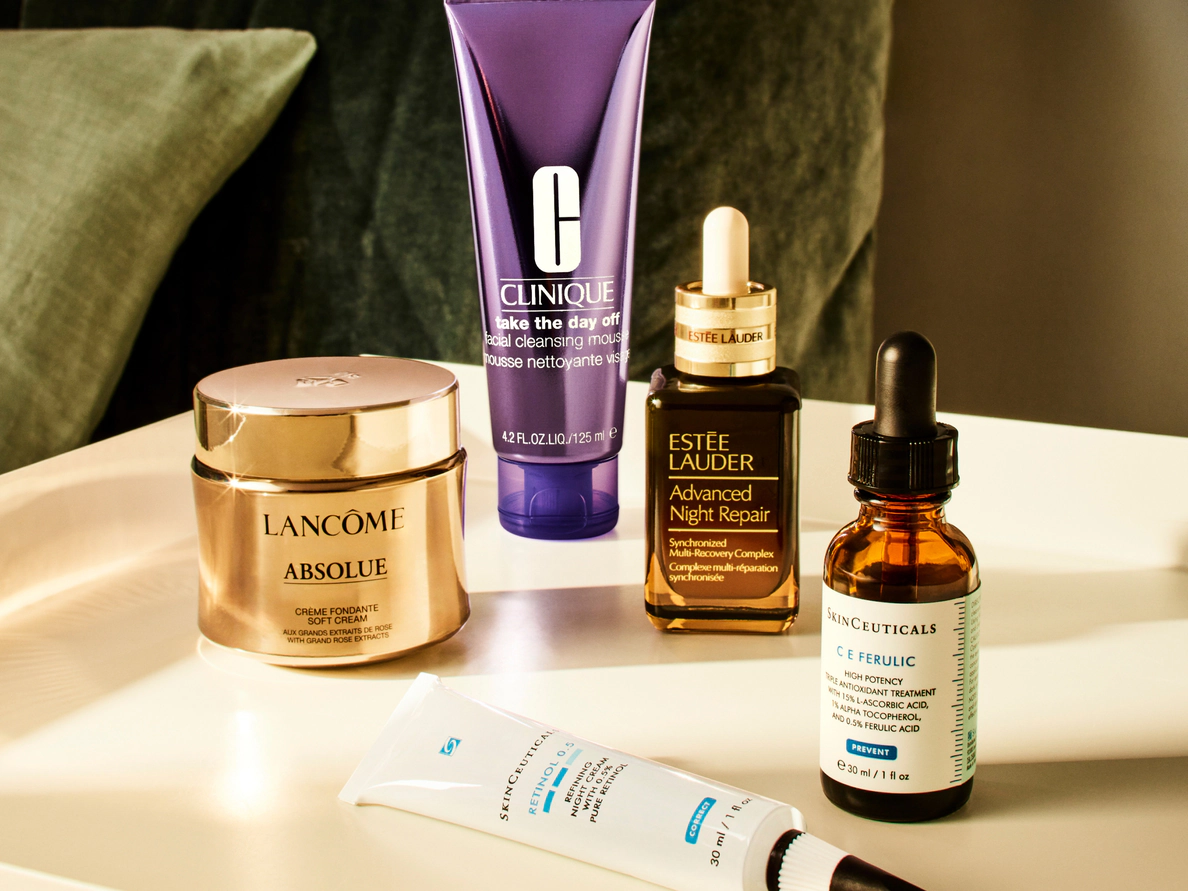Your Everyday Skincare Routine For Oily Skin
Your skin has its own mini ecosystem, intended to protect and nurture itself around the clock. While automated hydration sounds like a good thing, your sebaceous glands can be too active, leading to breakouts and blackheads.
Oily skin isn’t something you can change, but it is something you can control with the right routine.
Skincare for oily skin revolves around minimising excess oil, clearing up shiny residue and supporting your natural balance to ensure blemishes and irritation remain at bay. Here is a tried and true regime, backed by Dermatologist Dr Cara McDonald, to get you started.
Step 1: Cleanse
A cleanser for oily skin is the foundation for what comes next. Foaming cleansers help remove oils from deeper within your pores, while gel cleansers provide a lightweight solution to leave your skin feeling fresh without being stripped of moisture.
A combination of these two helps to better remove dirt, grime, oil and other debris from your pores, allowing your skin to breathe and better absorb your skincare. Why double cleanse? The first cleanse - using a leave-on cleanser - removes first dirt and grime, while the second cleanse neutralises oil production.
Skincare for oily skin requires careful formulation. It's important to get to know your skin type and what works for you. Some formulas can help to remove excess oils leaving your skin happily hydrated, while others can excessively strip the skin, resulting in dryness and increased oil production. Look for active ingredients such as salicylic acid and benzoyl peroxide in your cleanser as these help to absorb excess oils without drying the skin's surface.
How to apply an oily skin face cleanser:
Step 1: Remove excess dirt and grime with a no-rinse cleanser (optional)
Step 2: Gently wet your face with warm water
Step 3: Apply your cleanser, massaging gently into the skin
Step 4: Rinse with cool water
Step 5: Pat your skin dry to prepare your skin for the next products
Step 2: Use Toner
An oily skin toner is instrumental in balancing your skin’s pH, while removing leftover dirt or free radicals that can cling to your skin after cleansing. Regular toning can tighten pores, smooth and soothe rough areas, improving your skin's overall appearance. While it can be difficult to know which toner suits you, oily skin will benefit from nourishment over added hydration, so ingredients such as salicylic acid, witch hazel and alpha-hydroxy acids (AHAs), will help soothe areas of irritation and assist in treating dehydration on a deeper level—a necessity for oily skin types.
How to apply toner for oily skin:
Step 1: Apply toner to a cotton ball or cotton pad
Step 2: Using the cotton ball/pad, rub the product gently over your face and neck
Step 3: Allow a few minutes for your skin to air-dry before applying the next product in your routine
Step 3: Apply Serum
Now your skin is effectively cleansed and toned, it’s time to add some nourishment with a face serum for oily skin.This step is best following cleansing and toning as your skin is primed to absorb more serum, meaning you get more from your product.
Facial serums help unclog pores, even skin tone and control oils, all while adding those essential nutrients—like vitamin C—back into the skin. When choosing your serum, look for ingredients that reduce oil and balance the skin, such as salicylic acid, rosemary, thyme, or AHAs and BHAs.
How to integrate serums into your skincare routine for oily skin:
Step 1: Add a pea-sized amount of serum to your palms and rub your hands together - a little goes a long way
Step 2: Gently press your hands onto your face, taking care not to rub the product in too vigorously
Step 3: For a runnier serum, apply a few drops directly onto the face and pat it in with an upward motion
Step 4: Moisturise
An oily skin moisturiser soaks up excess oils and mattifies the complexion. For oilier skin types, lightweight oil-free moisturisers are best as they won't feel heavy on the skin and are pore-friendly (non-comedogenic). Those that contain water-based ingredients such as hyaluronic acid and antioxidants like vitamin B3 (to help reduce oil production) are especially effective.
How to apply moisturiser for oily skin:
Step 1: Add a pea-sized amount of moisturiser onto your fingertips
Step 2: Dot the moisturiser onto your face; nose, cheeks, chin and forehead
Step 3: Gently rub the moisturiser into the skin until absorbed
Step 5. Purifying Face Masks
Clay
When your skin is acting up, feeling greasy or extra oily, a clay mask is an effective way to calm the skin. Helping to refine and rebalance, the clay works to absorb excess oils and toxins, while hydrating, brightening and balancing the skin. Be sure to pick up a hydrating and detoxifying clay mask to help eliminate those free radicals.
Honey
Believe it or not, honey masks are one of the best ways to balance oil production in the skin, making it a great option to battle those excess oils. A honey mask can also soothe irritated skin and prevent infection thanks to its anti-inflammatory and antibacterial properties. Honey also works at a cellular level to promote skin cell regeneration, leaving you with a healthy glow.
Oatmeal
With many benefits to those with oily skin, oatmeal masks help to moisturise and soothe while soaking up excess oil thanks to its high absorbency. Using an oatmeal mask once or twice a week will give your skin a nice healthy dose of proteins and antioxidants, such as vitamin E.
Oily Skin Tips
Oily skin can be a frustrating experience, but it doesn't have to be ongoing. Here are some tips to help keep those excess oils at bay.
Avoid washcloths that add friction - Your washcloth can impact your oily skin problem. Try to use a clean and soft muslin or cotton washcloth everyday and avoid high-friction materials that can irritate your skin, remove natural oils and inflame conditions such as acne and eczema.
Pat dry skin - It might feel good to grab your towel and rub your face dry, but this can irritate the skin and potentially lead to fine lines. Gently pat your skin dry instead!
Try different face masks - Face masks are a great way to soothe and nourish oily skin. Look for clay-based masks, purifying masks, kaolin-based masks or masks that feature charcoal, tea tree oil or avocado oil. What works for you may be different to others, so the trick is to try a few different varieties or speak with a trained skincare consultant.
Skincare Routines For Every Skin Type
Our skin changes all the time, especially in Australia’s unique climate. So, we’ve created guides for each skin type to help you crack your skin code and prepare for all life’s moments.








